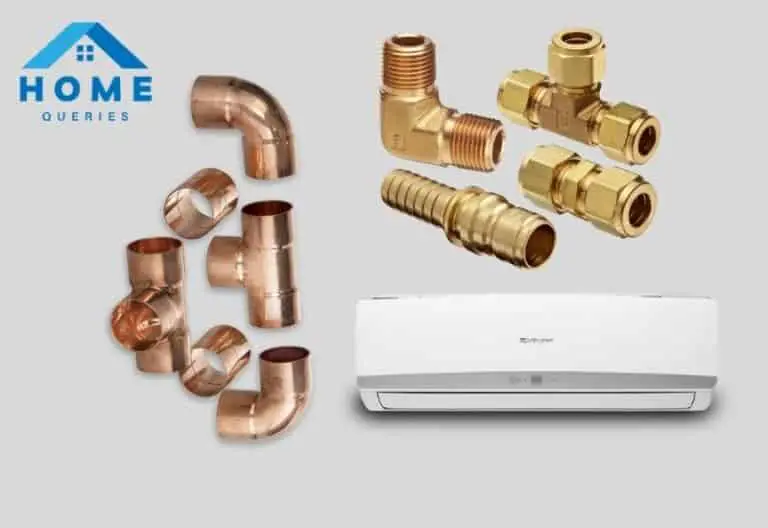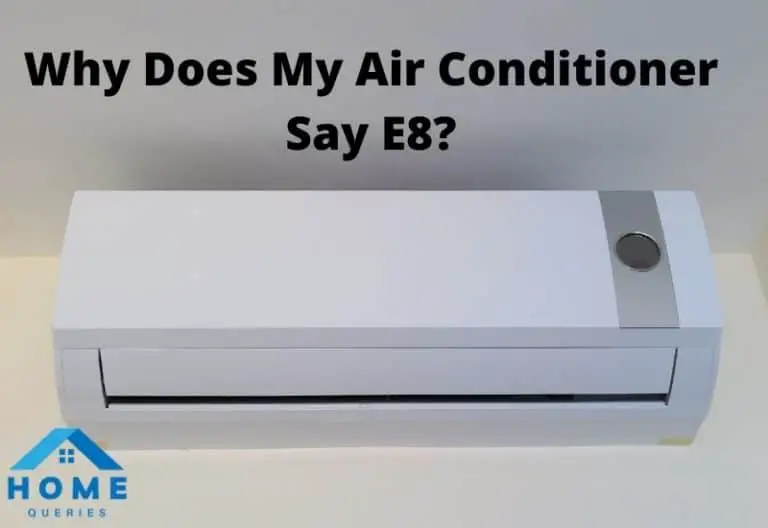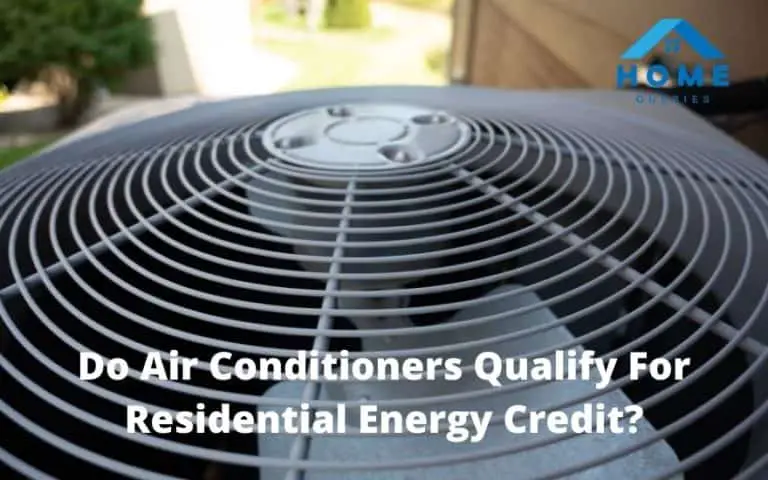A portable air conditioner is a portable system used to cool a single room. We can quickly put the portable air conditioner on the floor. We can quickly set up the portable air conditioner.
Some portable air conditioner models have wheels by which we can move them from one room to another room. Many people ask if a portable air conditioner can be charged or not.
So, today we’ll find out the answer to your question that is, “Can a portable air conditioner be recharged?”

Can A Portable Air Conditioner Be Recharged?
Recharging the portable air conditioner is a troubleshooting step. When there is less refrigerant, this situation is called a refrigerant leak.
People are thinking of recharging the portable air conditioner if the device or appliance does not work. Some models of portable air conditioners have the option to be recharged. But experts do not advise recharging the air conditioner.
You can fix this problem is to repairing the leak instead of recharging it.
You can read the whole article if you want to know whether a portable air conditioner can be recharged or not and why you may not recharge the air conditioner.
Do You Need to Recharge The Portable Air Conditioner Daily?
People have a big misconception that they need to recharge the portable air conditioner with a Refrigerant daily, just like a car or truck needs fuels daily.
But the system of refrigerant in an air conditioner is entirely different. You need not recharge your portable air conditioner daily or routinely because your portable air conditioner is never running low until there is no leak.
Suppose you feel that your portable air conditioner is running low. In that case, you should send the air conditioner to the HVAC company to refill your air conditioner rather than recharge with a Refrigerant.
Do A Portable Air Conditioner Need A Refrigerant?
A Portable air conditioner needs a refrigerant. It is essential for the cooling system of a portable air conditioner.
Read more: Can A Portable Air Conditioner be Used as a Heater?
How Does Refrigerant Work?
Refrigerant can form both in gas and fluid that is used in a portable air conditioner. It is used in the refrigeration cycle in the air conditioning system. It absorbs the heat from the environment and helps to cool the environment.
The compressor of a portable air conditioner uses coils to rotate refrigerants. The chemical state of the refrigeration is changed to capture and dispose of heat. The working procedure of refrigerants are given below :
- Firstly, it moves through the coil of a portable air conditioner.
- It starts as a gas that absorbs the heat of the indoors.
- Then it converts to a highly pressurized cold liquid.
- This liquid flows to the fan.
- The fan blows air through those coils.
- The cooled air cools the environment.
The refrigerants in your portable air conditioning unit are in a closed system. So, the refrigerant is an endless cycle from gas to liquid and liquid to gas. This cycle repeats the process forever. Therefore, there should be no leaks in the refrigerant.
Suppose, you find that your portable air conditioner is running low on refrigerant or not working. In that case, you should not refill your portable air conditioner with a new refrigerant if the refrigerant is running out, somewhere in the refrigerant cycle leaks.
Your portable air conditioner is leaking refrigerant. It will continue to circulate refrigerant until a repair is made in the portable air conditioner; if you store more refrigerant into the air conditioner without fixing the leaking in the refrigerant, your money is wasted.
If there is a puncture in the pool lining, water will leak out. You can add more water, but this process does not fix the problem either. It is just a waste of money.
Why Should You Not Refill Your Portable Air Conditioner?
You should refill your portable air conditioner if you need it. But refrigerant should remain constant in your system because it is not a car or bike where you need to check whether the oil level is filled for optimal running. Refrigerant remains as same as before unless it leaks.
If your refrigerant is getting a leak, a technician will tell you to refill the refrigerant. But you need to refill the refrigerant within next summer.
So, it is the best way to purchase a portable air conditioner again because the refrigerant remains constant for a long time. Can A Portable Air Conditioner Be Recharged?

How Many Types Are Refrigerants?
Technicians can use different refrigerants in a portable air conditioner, such as Chlorofluorocarbons, R22, R410A.
1. Chlorofluorocarbons
Chlorofluorocarbons are one type of refrigerant that can be used in a portable air conditioner. It is one of the greenhouse gas. It is harmful to the environment. So, it is restricted to use as a refrigerant.
2. R22
R22 is known as Freon. It is used as a central air conditioning system refrigerant. It has been used for decades. It is responsible for damaging ozone depletion. So, as a result, the Clean Air Act 2010 was passed, and the manufacture of the refrigerant named R22 was stopped. It is completely phased out by 2020.
3. R410A
The companies use it in replacement of R22. It is less harmful to the environment because no chlorine is used in the mixture of R410A. R410A is also known as Puron. The characteristics of the cooling system are as same as R22. The method of Puron is more efficient.
4. HydroFluoroCarbons
It is known as HFC. It is also used as a refrigerant. It has less impact on the environment. HFC does not contain any chlorine. The effect of HFC on global warming is tremendous compared with traditional refrigerants.
5. HydroCarbons
HydroCarbons are also used as refrigerants. They are harmless to the ozone layer. They have no direct greenhouse effect. They are highly flammable. So many countries ban this type of combustible gas openly in front of the public.
According to ISO 55149 and EN 378.2000, this should also apply in Europe. However, the standard IEC 355.2.20 allows HCs in household refrigerators with refrigerant charges up to 150 g.
This standard has opened the way for some European refrigerator manufacturers to produce household refrigerators with flammable isobutene, R600a. These have been accepted enthusiastically by environmentalists and have achieved great success in the market.
6. FluoroCarbons
Fluorocarbons contain no chlorine and are not harmful to the ozone layer. However, they are incredibly stable, and they have a high GWP. R218 is an example of a fluorocarbon, and FCs are also present in the mixtures R403 and R408.
7. Ammonia
Ammonia, R717, is an attractive refrigerant alternative. It has been used in refrigeration systems since 1840 and vapor compression since 1860. In terms of its properties, it should be considered a high-class refrigerant. Furthermore, its ODP and GWP are 0.
However, although it is a self-alerting gas, i.e. leaks can easily be detected by the smell, ammonia is hazardous even at low concentrations because the smell often causes panic. This is why ammonia was withdrawn from applications for use by unskilled people and retained only for industrial applications.
It is also quite common in commercial refrigeration, although safety regulations require that it be used with a secondary distribution loop. Obviously, this secondary loop reduces the efficiency.
8. Carbon Dioxide
R744, carbon dioxide, has several attractive characteristics: non-flammable, does not cause ozone depletion, very low toxicity index (safety A1), available in large quantities, and low cost.
However, it also has low efficiency and high operating pressure (approximately ten times higher than R134a). For the two latter reasons, efforts are needed to improve its refrigeration cycle and related technology, particularly heat exchangers and expansion devices.
A major forthcoming CO2 application seems to be air conditioning in the automotive industry. Heat pumps could also benefit from CO2 due to the higher temperature that can be obtained even at very low ambient temperatures.
Can A Portable Air Conditioner Be Regassed?
Portable air conditioners are closed units. So there is no reasoning for re-gassing the portable air conditioner unless there is leakage. If the portable air conditioner is running low on refrigerant, either it is leaking or undercharged at installation.
If it is leaking, adding gas is not a solution. A qualified technician will be able to fix the leak, test the repair and recharge the system with the correct amount of refrigerant required. Often, air conditioners will never need to be re-gassed.
Can You Lose Refrigerant Without A Leak?
The system of your portable air conditioner might have a slow leak depending on conditions and age. The most common cause of AC freon leaks is likely erosion of the metal over time due to formic acid or formaldehyde corrosion. Small holes are formed when the acid eats away at the metal, and the unit eventually releases freon.
How Much Does It Cost to Recharge A Portable Air Conditioner?
It costs $100 to $250 to recharge a portable air conditioner.
Nowadays, people are using portable air conditioners for this warming weather. So people are concerned about their portable air conditioner whether a portable air conditioner can be recharged. But experts do not provide advice to recharge a portable air conditioner.
Conclusion
In today’s topic, we’ve covered the answer to your question that was, “can a portable air conditioner be recharged?”. In the end, you shouldn’t recharge your portable air conditioner if it doesn’t have a recharge option.
Reference-

![What Is The Longest Lasting Air Conditioner? [10 Reviewed] 3 What Is The Longest Lasting Air Conditioner? [10 Reviewed]](https://homequeries.com/wp-content/uploads/2021/12/What-is-the-longest-lasting-air-conditioner-1-768x432.jpg)




